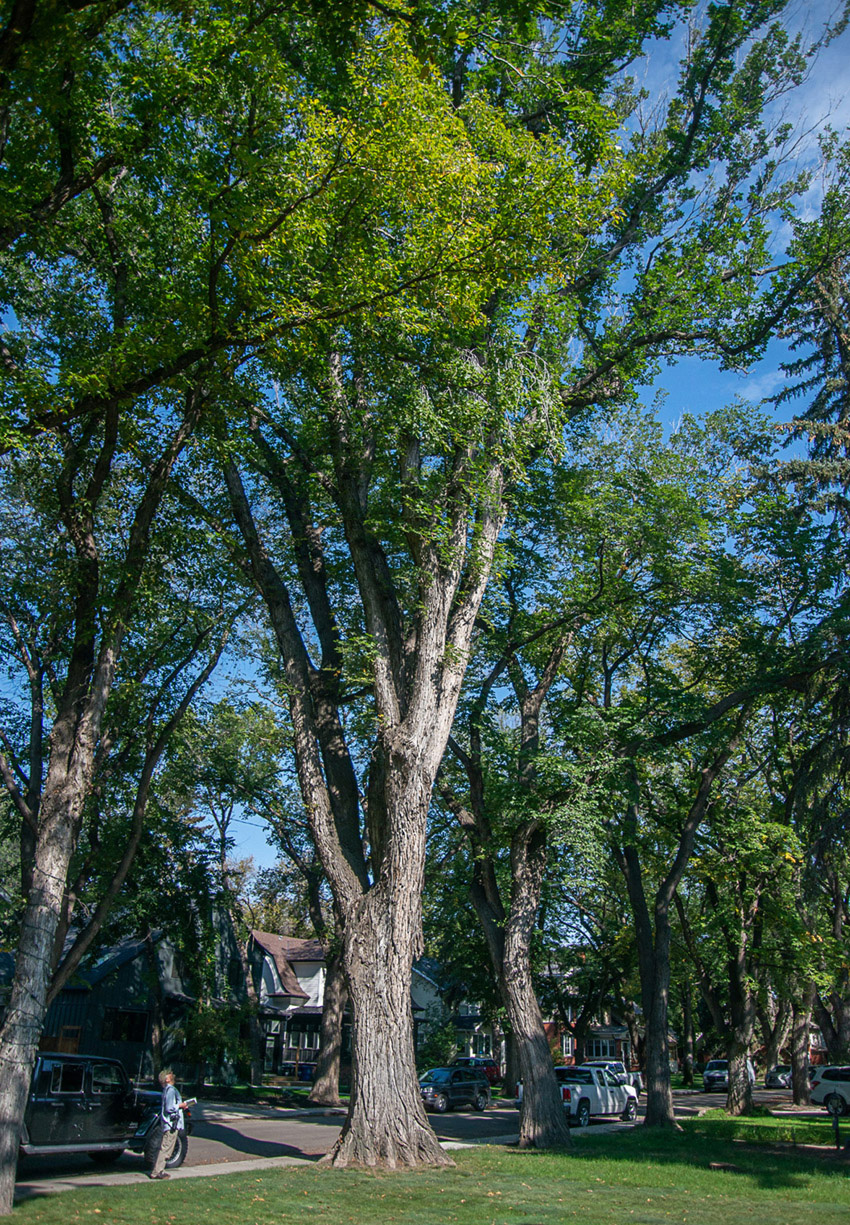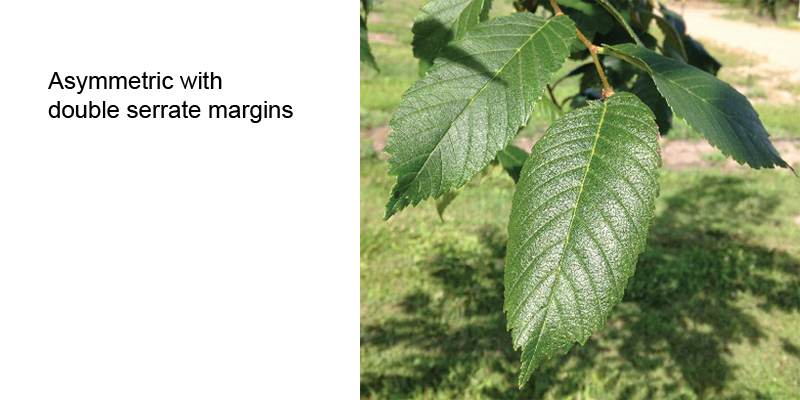 American Elm
American Elm
between 214 and 216 Poplar Cres.
American Elms Ulmus americana are loved for their graceful vase-shaped form with branches spreading upward and outward to form an umbrella-like canopy. Native to North America, they proved to be an ideal urban tree, able to tolerate stresses such as compaction and root disturbance from nearby construction. They became the most popular tree to be planted in the booming cities of the 19th and early 20th century, including Saskatoon, which now has about 28,000 city-owned and thousands of privately owned elms. They create a cathedral like ceiling over many of the streets of our older neighbourhoods and are featured in Woodlawn Cemetery, many older parks and in private yards. Thriving in our climate, they can live up to 300 years or more and can reach 80 feet or higher. Unfortunately, they have no resistance to Dutch Elm Disease (DED).
Native to Asia, DED was accidentally introduced from Europe to Ohio in 1928. It quickly spread, devastating both natural and urban American Elms across the USA and eastern Canada. Reaching Manitoba by the 1970s, it's now in Saskatoon, threatening to destroy a large portion of the urban forest in our older neighborhoods. The critical lesson to be learned is the importance of planting a variety of species on our streets, parks, and private landscapes.
For more information on DED and how to help prevent its spread see this page.
![]() Alternate location Across from 1214 Ave. P South – near wall of Gordie Howe Sports Complex
Alternate location Across from 1214 Ave. P South – near wall of Gordie Howe Sports Complex

